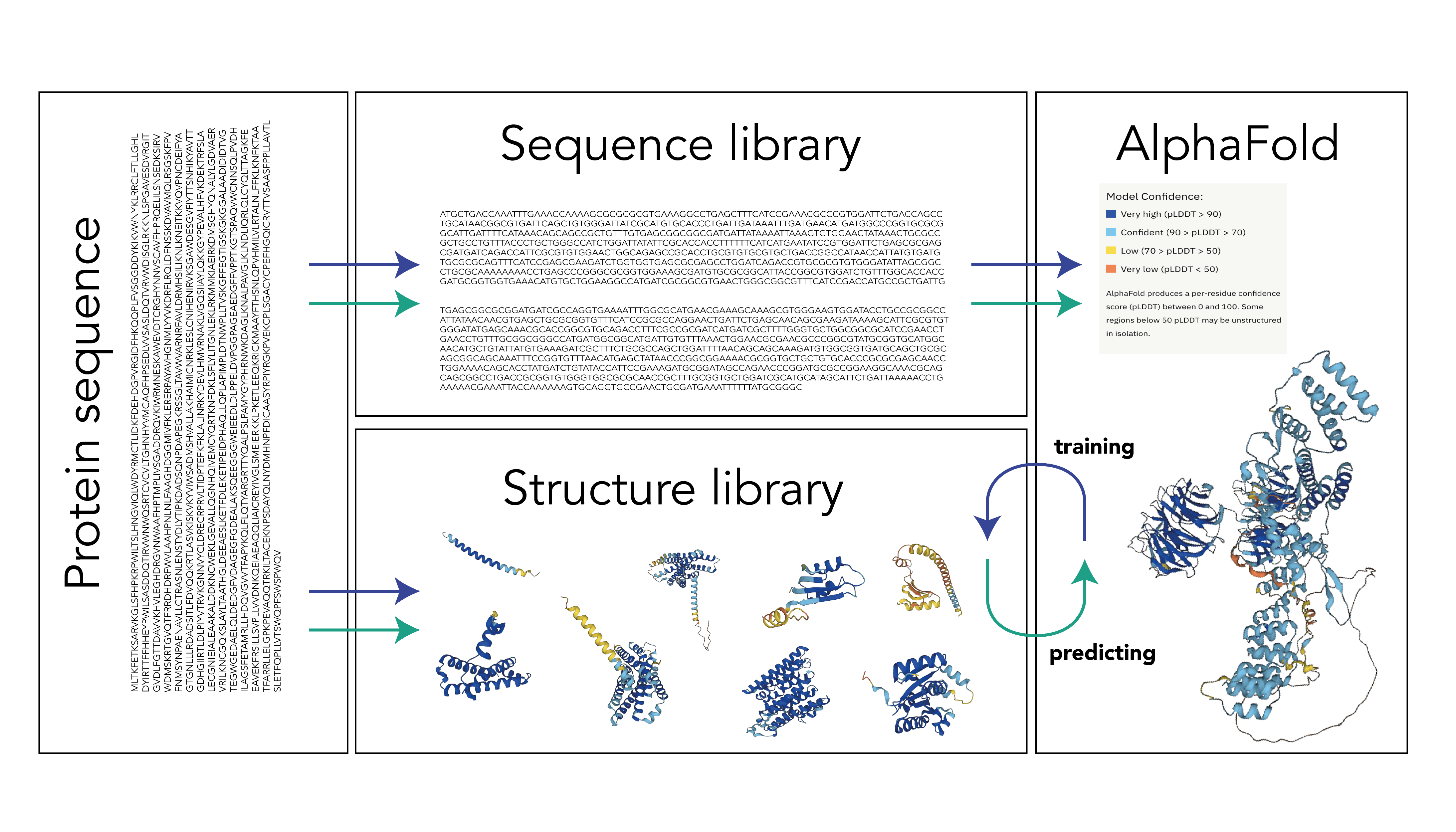AI-based protein structure prediction at BioLizard
As a team of computational biology and AI enthusiasts, BioLizard (much like AlphaFold) uses advanced computational methods to generate biological knowledge. It goes without saying then, that we were very enthusiastic when we heard about the accuracy with which the AlphaFold tool could predict protein structures based on the amino acid sequence.
Sparking this enthusiasm was Dr Christian Rausch, BioLizard’s director of innovation. As a seasoned structural biologist, Christian gained experience in both experimental structural biology as well as computational structure modelling over the course of his career.
 After hearing about the performance of AlphaFold, he immediately put together a core team of Lizards to dive into the source code as soon as it was available. In the meantime, we are familiar with the algorithms and workings of AlphaFold, we benchmarked the performance of the tool and we studied its main advantages and limitations. In line with the general sentiment of the scientific community, we were also in awe of AlphaFold’s capabilities. Following an in-depth assessment and internal training for our Lizards, we have adopted the tool in our technology portfolio.
After hearing about the performance of AlphaFold, he immediately put together a core team of Lizards to dive into the source code as soon as it was available. In the meantime, we are familiar with the algorithms and workings of AlphaFold, we benchmarked the performance of the tool and we studied its main advantages and limitations. In line with the general sentiment of the scientific community, we were also in awe of AlphaFold’s capabilities. Following an in-depth assessment and internal training for our Lizards, we have adopted the tool in our technology portfolio.
We said before that, despite how powerful AlphaFold is, it will not completely replace experimental structural biology. Although BioLizard focuses on computational biology, we strongly believe that a combination of computational and experimental biology is fundamental in the scientific process. This was also illustrated in one of our first AlphaFold projects. Our client, an innovative drug development company, set out to synthesize parts of a protein with known drug activity, to modify and reassemble these parts to make the drug more efficient. However, after a lot of trial-and-error, the team saw that the modified protein folded differently than expected and lost its activity. After all the effort done to design, synthesize and test this modified protein, the team’s bottleneck turned out to be in the physics of protein folding. This is where computational biology comes into play! Using AlphaFold, we can now predict the structure of new protein constructs before they are synthesized. The correct folding (and corresponding activity) of a new construct is now assessed before going through all the hassle of cloning and synthesis. Once our AlphaFold predictions confirm the correct folding of a new construct, experimental biologists can synthesize it and test its efficiency.
This whole blog has been about AlphaFold… However, there are other kids on the block as well! RoseTTAfold is a tool for AI-driven protein structure prediction, much like AlphaFold. Both methods were actually published at the same time, both show impressive performance and the source code of both is available. We are currently evaluating and comparing both methodologies, to see if there could be complementarities between them.
It’s clear that the world of protein structure determination has been turned upside down since the breakthrough of AI-based structure prediction tools. Our Lizards are on top of all these developments, evaluating their potential for our clients’ projects and for science in general. It’s the dawn of a very exciting era, and we are ready and set for it!
Looking for an experienced partner in AlphaFold?
Trust the data professionals.
< Read the previous blog in this series here.




